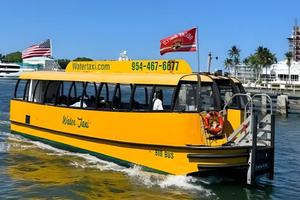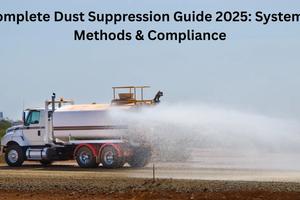How to Manage the Safety of Your Fleet - Clear Policies, Regular Training, Innovative Technology, And DOT Compliance

Key Takeaways
Essential insights to remember
Develop a structured fleet safety management system with clear policies, certification requirements, and compliance standards to set high expectations for all drivers.
Conduct regular fleet safety training sessions and meetings covering essential topics like defensive driving, vehicle inspection, and distracted driving prevention.
Implement fleet safety technology solutions including telematics, dashcams, and monitoring systems to track driver behavior, improve accountability, and reduce accidents.
Ensure DOT compliance and proper fleet safety certification through comprehensive documentation, regular audits, and up-to-date fleet safety manuals.
Measure fleet safety performance using established metrics, analytics, and benchmarking to continuously improve your fleet safety program.
Fleet safety is an important consideration for any manager. Deciding on the most appropriate measures to enable drivers to stay out of trouble while they are on shift is essential, but how do you know what’s best? While it is hard to deny the necessity of a strong safety policy, figuring out what goes into it is another thought path entirely. The guide below has some pointers to make the process easier.
Set the Bar High with Clear Policies
The first thing to do is to have a non-negotiable high bar with no room for misinterpretation when it comes to what the safety expectations are. If drivers know what you need them to do, and it is written clearly in their contractual agreement, they will be far better able to adhere to them.
Set this bar high, because impeccable standards are needed to keep everyone where they need to be. Accidents happen for so many reasons, and one of those is often a lack of training or conversation about how to be a good driver. Offer simple pointers, and have it agreed upon by all key drivers in the fleet.
Hold Regular Safety Briefings
Fleet training is an essential part of management. Regular safety briefings are an integral part of what makes them viable and keeps them in functional operation. These should be held every week or so and include every single driver within the fleet so that the message is widespread and heard all over. It is also important to make these meetings interesting enough that people listen, so mix up the format and follow up with questions too.
Set Them Up for Success with Innovative Devices
While road accidents are not always avoidable, there is evolving tech being developed all the time that enables safer decisions and faster reactions out on the road. Given that a leading cause of accidents is a distracted driver, tools that provide assistance in mitigating this should always be a welcome addition to fleet vehicles. They are easy to install and have exceptional features such as forward collision warning to deter an accident by gifting a few seconds to react.
Don’t Avoid DOT Compliance
DOT compliance is what every commercial-style vehicle has to adhere to in order to retain legality and road worthiness. Being DOT compliant means ensuring fleet vehicles are properly maintained, all faults are rectified in a reasonable timeframe, and the drivers are trained to a high standard too. Make sure this is at the forefront of your policy, because not only does not observing it put other road users at risk, but it also means your business is vulnerable too.
Consider Using Telematics
Telematics are pieces of technology that sit in the fleet vehicles and provide essential data updates on the way that people drive. It can show you who is being safe by measuring things like driving speed, braking frequency and fuel consumption compared to distance traveled.
Ensuring that your fleet is operating safely is essential for the integrity of your reputation. Accidents happen all the time, for so many reasons. Therefore, anything that you can do to minimize the risk should be wholly embraced.





